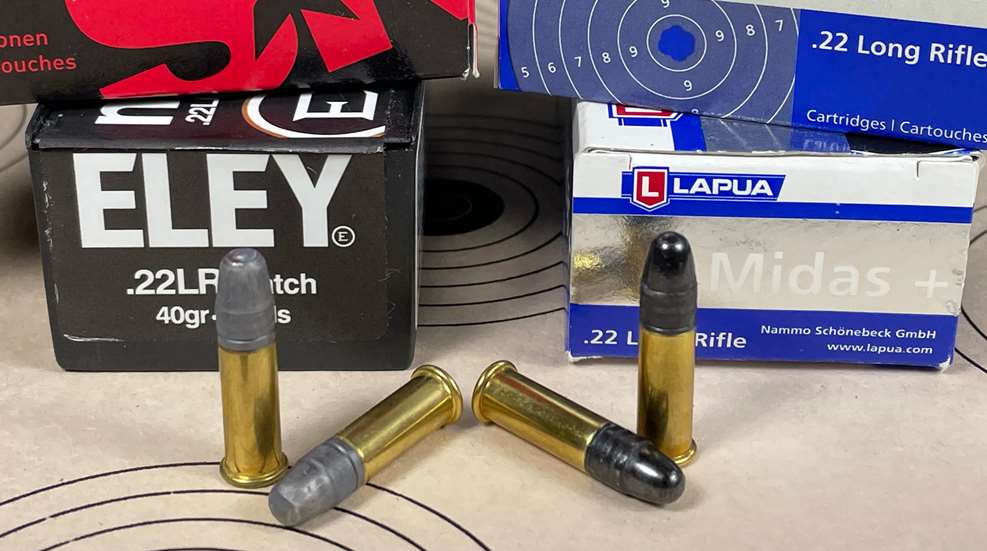
While most casual rimfire enthusiasts recognize that .22 LR ammunition differs in one or more traits, and, as with centerfire ammo, that “match” loads supposedly signify elevated performance, that’s the extent to their understanding—and that’s just fine. The latter is particularly convoluted, as some of the priciest (and best performing) “match” loads don’t use the moniker, and there are frequently tiers of competition-worthy ammo within a manufacturer’s offerings. What’s more, prices of .22 LR range from around $0.06 per round up to $0.80—more than the cost of some quality .223 Rem. loads. So, how do you know which one to choose?
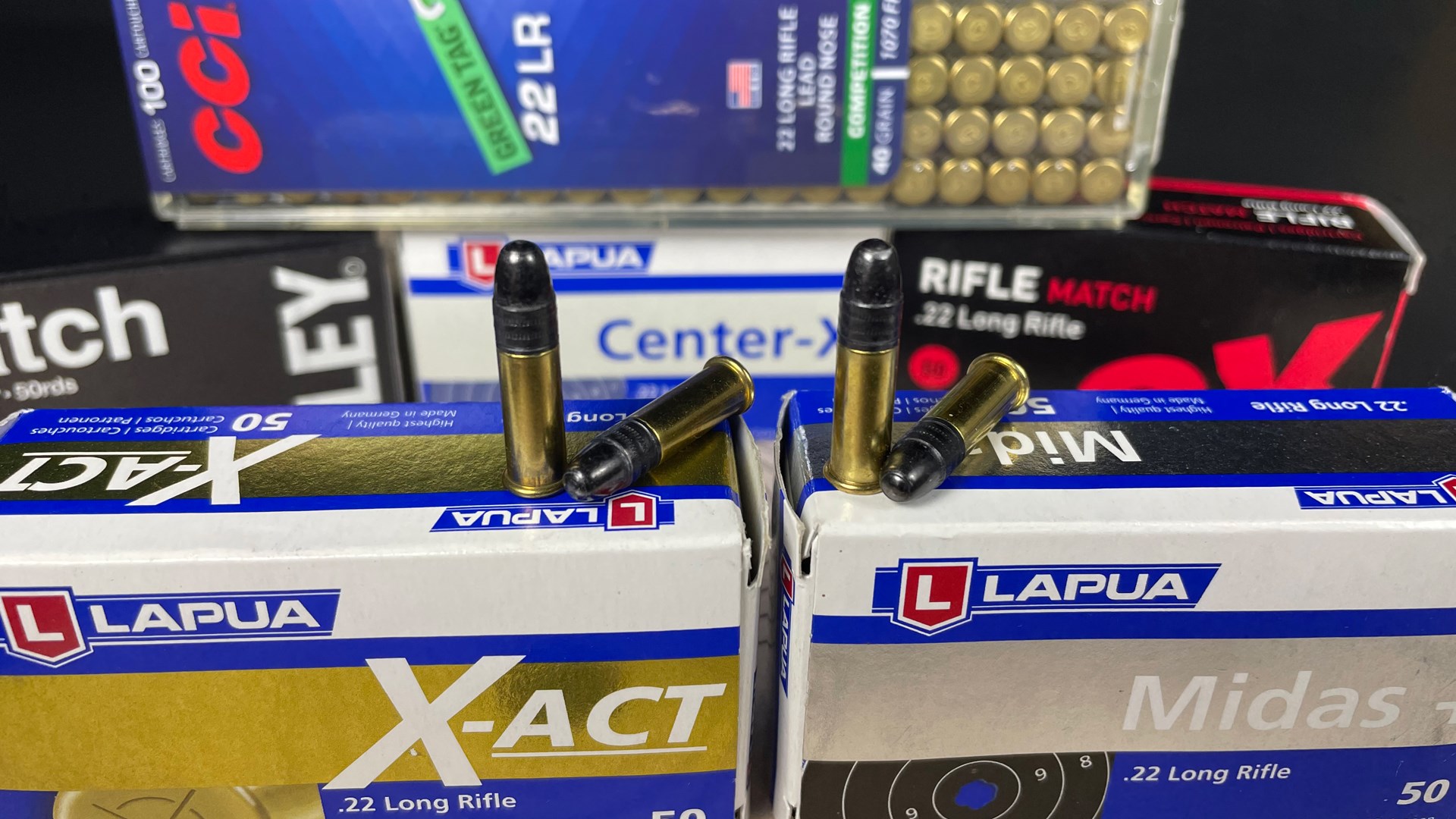
Cutting The Choices
Comb the website of an online ammunition retailer, such as MidwayUSA, and you’ll find a plethora of .22 LR. As an example, at the time of this writing, the aforementioned website identified 96 options, and 43 of which were in stock. Forty three is a lot of options. Configurations included an amalgamation of lead, round-nose, hollow-point and truncated-cone bullets in varying weights, subsonic and supersonic velocities and differing packaging options. Don’t get discouraged; many options can be immediately eliminated. Here’s how.
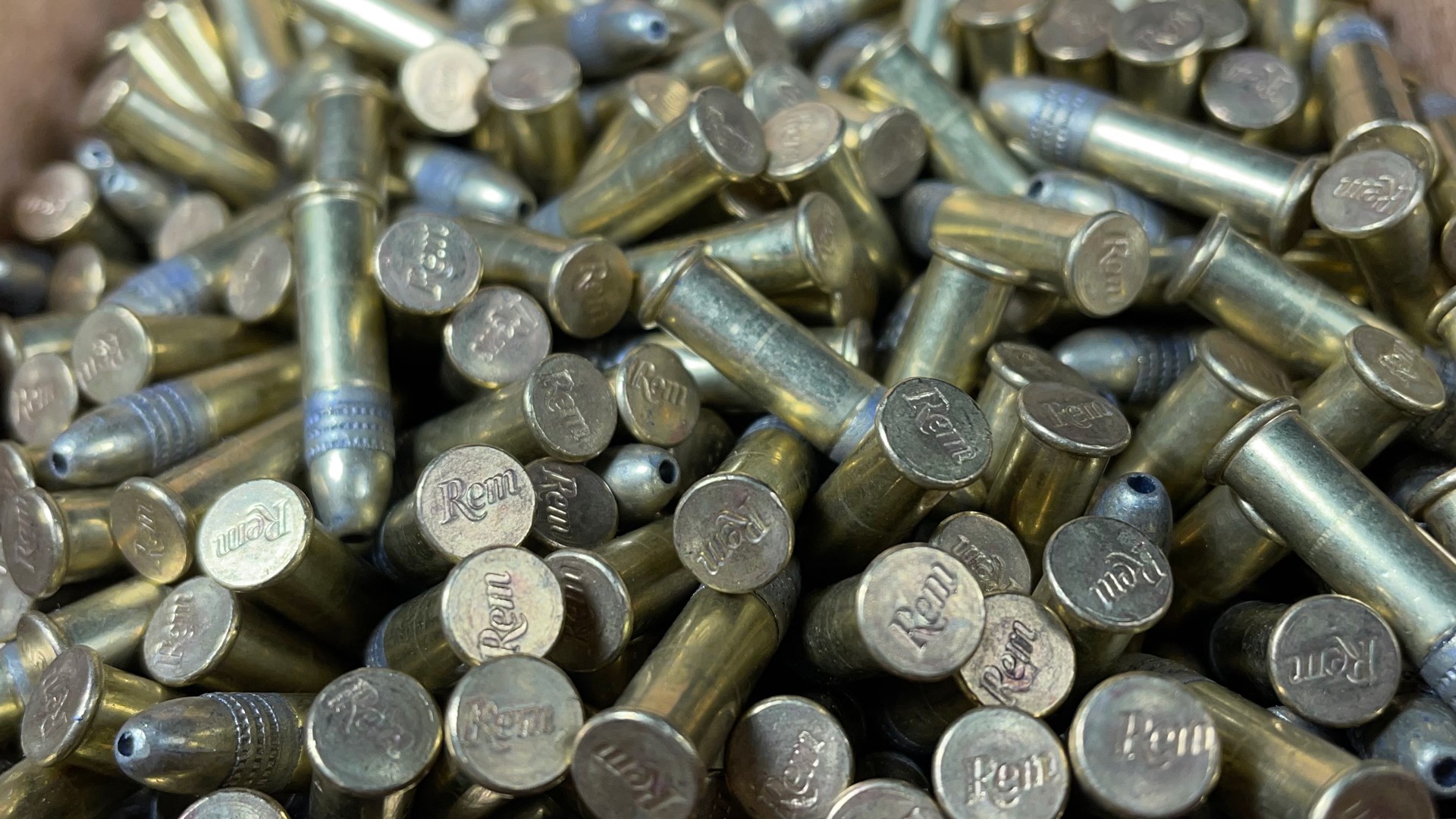
First, disregard any options sold in loosely packed, bulk packaging; premium ammunition—those providing the best accuracy—isn’t heaped into boxes, tubes or those waxed boxes resembling milk containers. That is fodder for plinking, introducing a novice to firearms, hoarding (sadly) and small-game hunting.
From my experience with such loads, they frequently exhibit elevated standard deviations. Consistency is key to accuracy, and that they aren’t, generally speaking. Therefore, begin the search by omitting any ammunition that isn’t packed so the individual rounds are secured. This is but one consideration, as not all loads packaged in this manner are “match.”
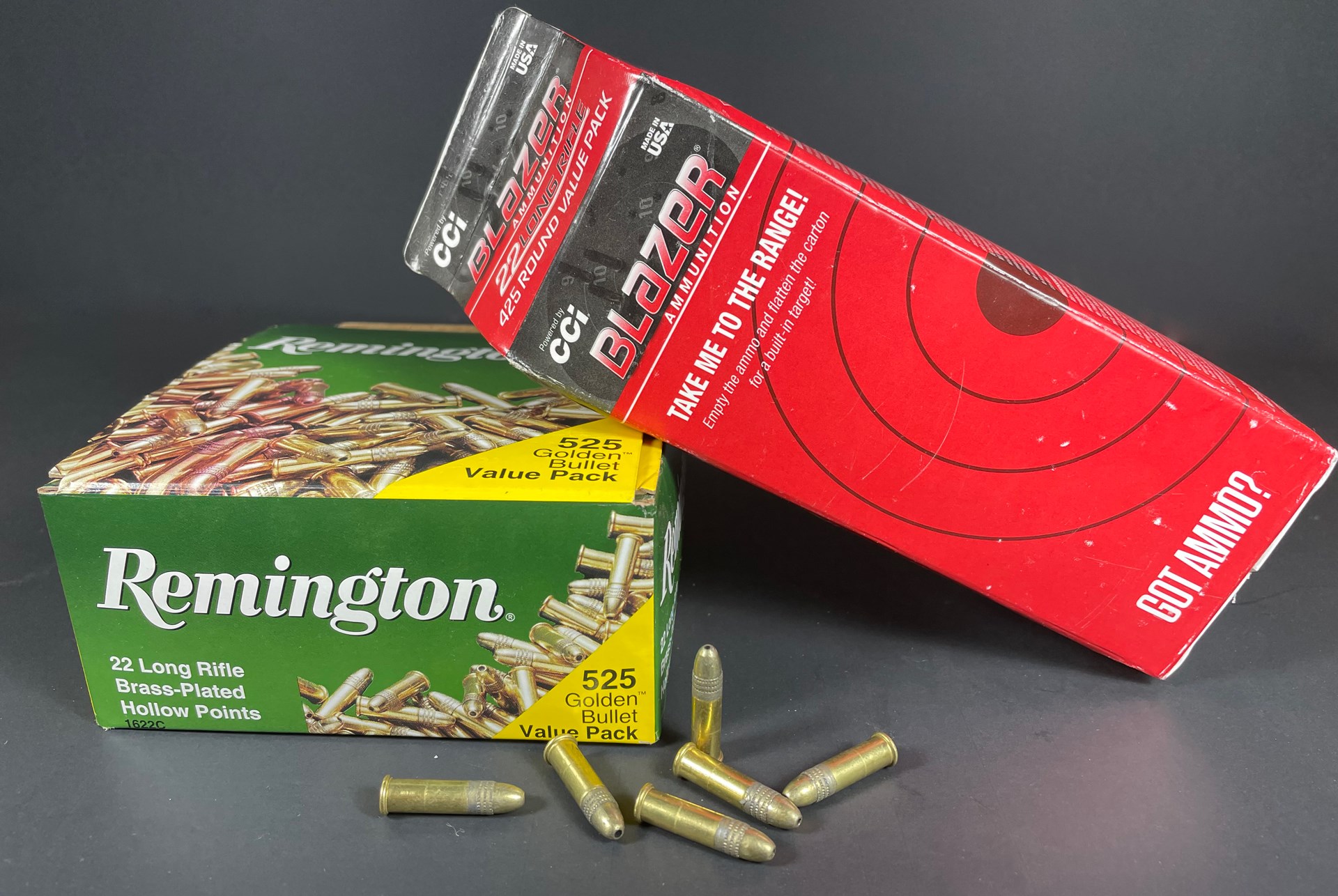
Next, identify the velocity of the ammunition. From my experience, and that of people in the know, the best accuracy with .22 LR is found somewhere between 1,066 to 1,100 f.p.s., give or take. You’ll note that both velocities are subsonic (less than the speed of sound), which negates the need to transition—transonic—from supersonic to subsonic, which is where instability occurs. There’s a reason Olympians win using premium, subsonic ammunition.
High-velocity loads, in general, should be relegated to hunting, nuisance control and plinking. Although said ammunition can be accurate, very seldom will they outperform true, top-tier “match” ammunition.
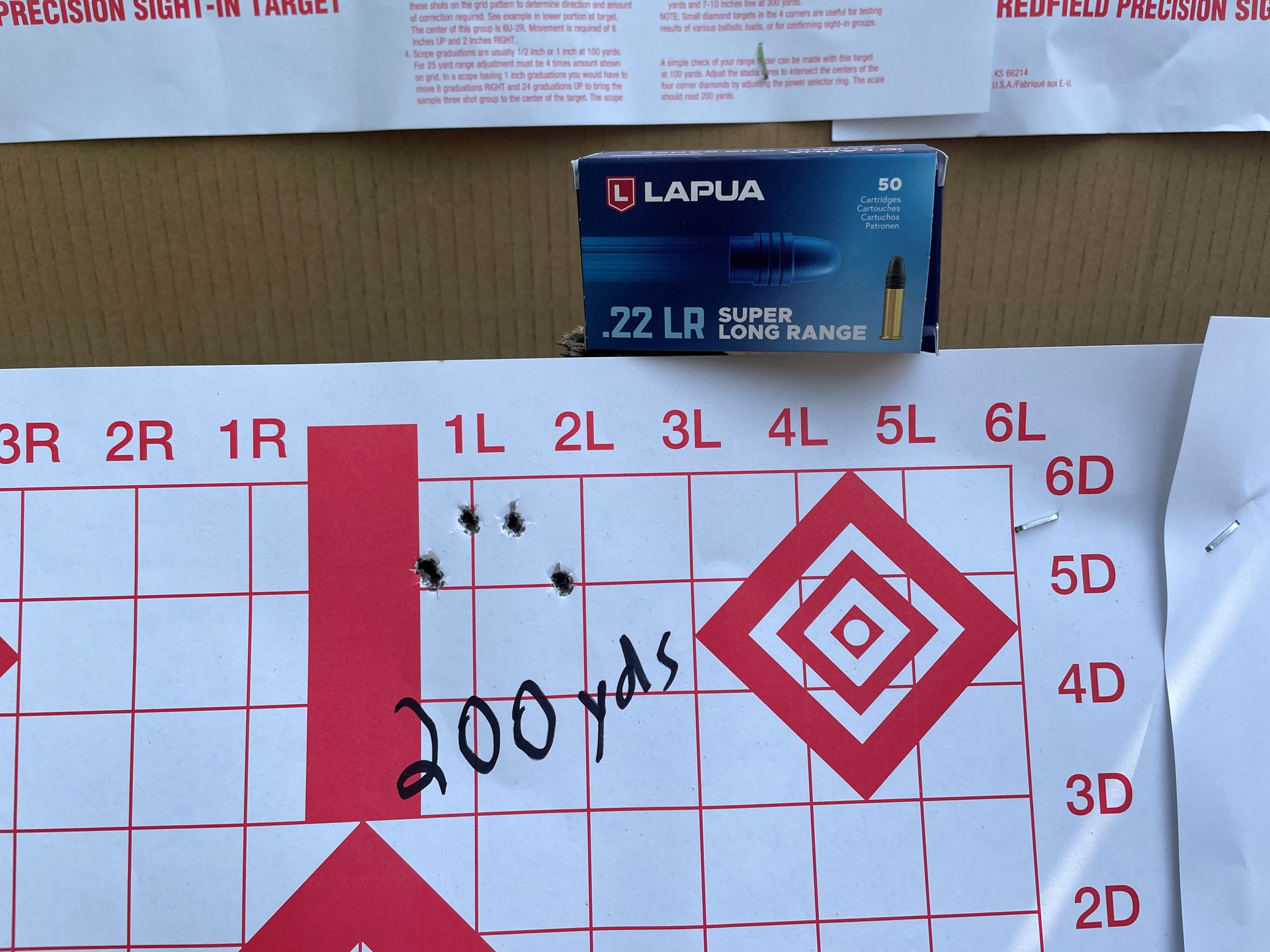
Concerning those velocities previously mentioned, for 50-meter (about 54.68 yards) competition, ammunition at the lower end of the velocity spectrum is the best choice. Shooters only benefit from the slight boost in velocity (and approaching supersonic speeds) if they’re partaking in PRS Rimfire, NRL22 or other extended-range competition. Higher velocities result in less drop and wind deflection—a moot point at 50 meters.
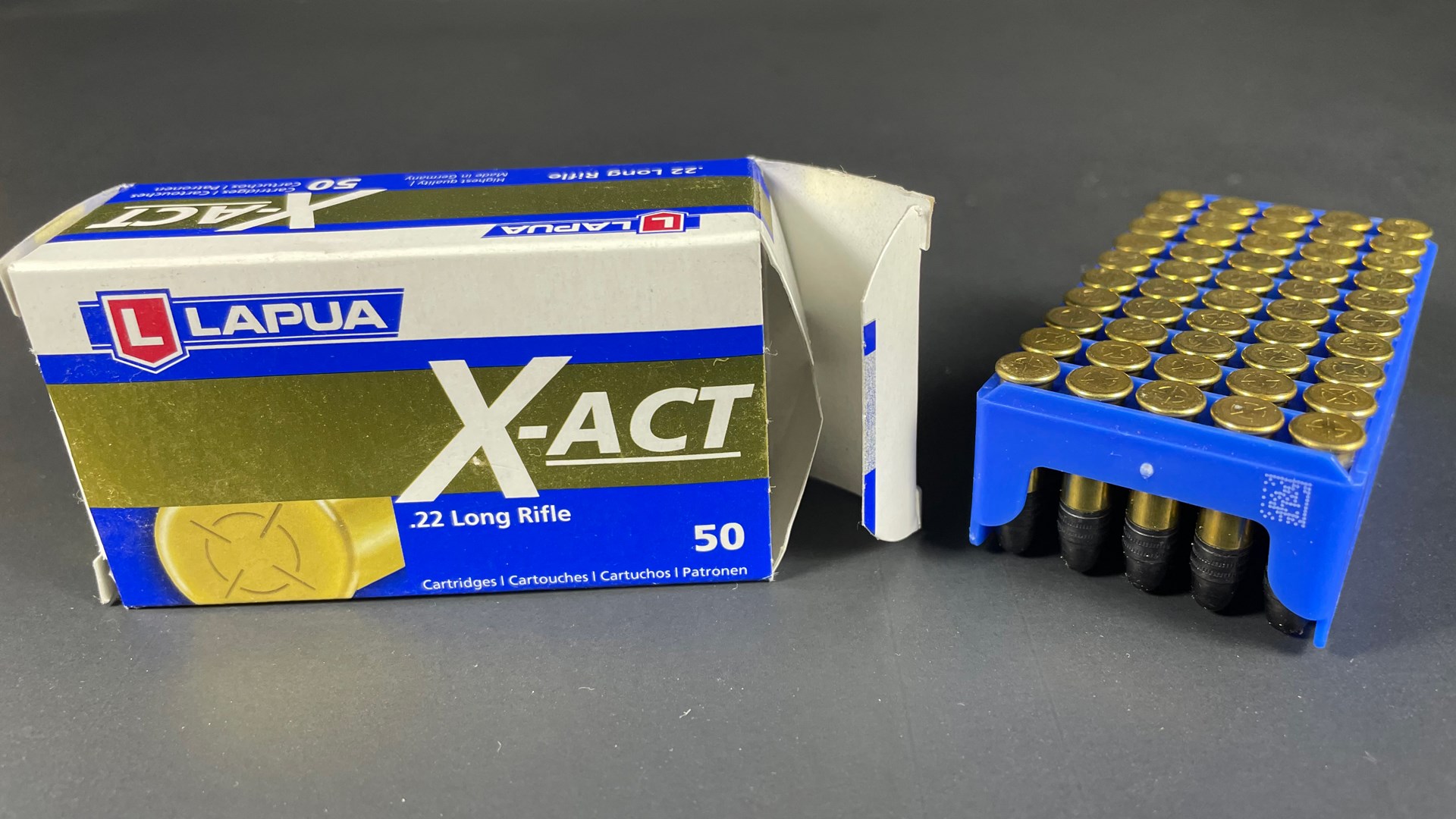
Lapua is the perfect example of an ammunition maker fulfilling calls for competition-quality .22 LR ammunition at opposite ends of that velocity range. For instance, the company offers Center-X, Midas+, and X-Act—the choice of many Olympians—which have a velocity of 325 m.p.s. (approximately 1,066 f.p.s.), as well as the newer (2023) Long Range and Super Long Range options.
The latter propel that same lubricated, 40-grain round-nose bullets to 335 m.p.s., or around 1,100 f.p.s. Eley’s Tenex, which is also a tier-one load, splits the difference, as it propels a lubricated, 40-grain flat-nosed projectile to 1,085 f.p.s. Notice the similarities? It’s not coincidence. Proper premium .22 LR ammunition generally employs a lubricated, lead 40-grain bullet within the outlined velocity range.
Quality Corresponds To Quality
By now, the options should have decreased significantly. That is desirable. Still, we must address a key difference—cost. Match-grade ammunition is typically costlier than its “blasting” brethren, and an increase in price correlates to improved performance potential. Notice that I italicized “potential.” Why? There is a caveat; the priciest ammunition might not be the most accurate in your rifle. There is a reason.
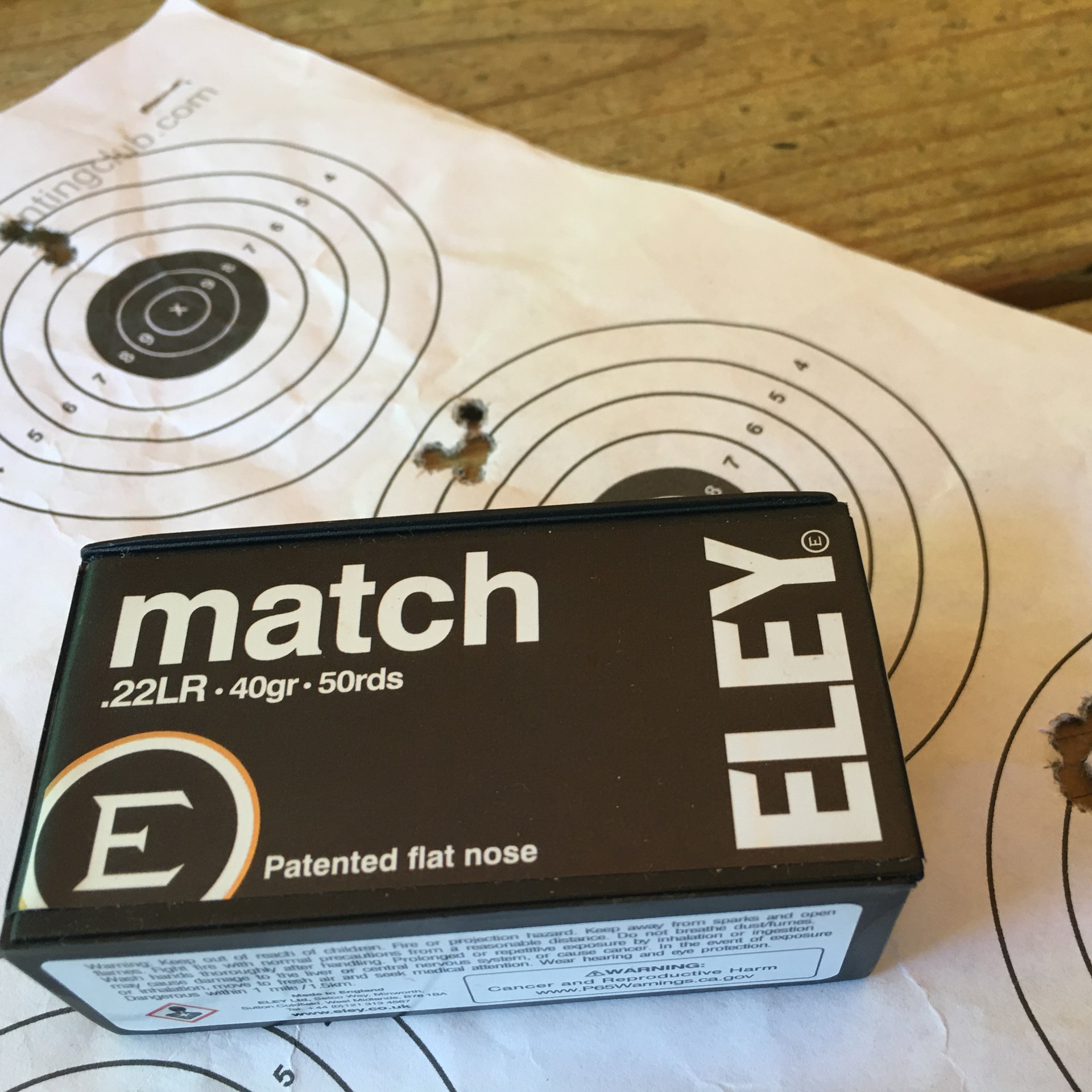
Using Lapua as an example, in the 1,066-f.p.s. speed, the company offers Center-X, Midas+, and X-Act. MidwayUSA listed the per-round price as $0.40, $0.52, and $0.80, respectively. Of the loads, X-Act is the best. How do I know? Lapua’s intent is to create the most accurate ammunition possible, but it isn’t until production that the company knows under which moniker it will be packaged. What decides the moniker?
Fifty-round groups are fired and measured for dispersion, or group size. Therefore, there can be an abundance of Midas+ or Center-X, or a run could meet the rigorous specifications for X-Act. Very little becomes X-Act, and it’s secured primarily by Olympic shooters and college teams. Simply stated, it costs the most because it’s the best Lapua offers. Similarly, Super Long Range has a lower dispersion than does Long Range, so the former costs more.
Other companies address competition-worthy ammunition differently. As an example, CCI schedules runs of its popular and premium Green Tag into production runs; however, not all will garner the coveted designation. Like Lapua with X-Act, CCI holds Green Tag to elevated standards and won’t compromise.
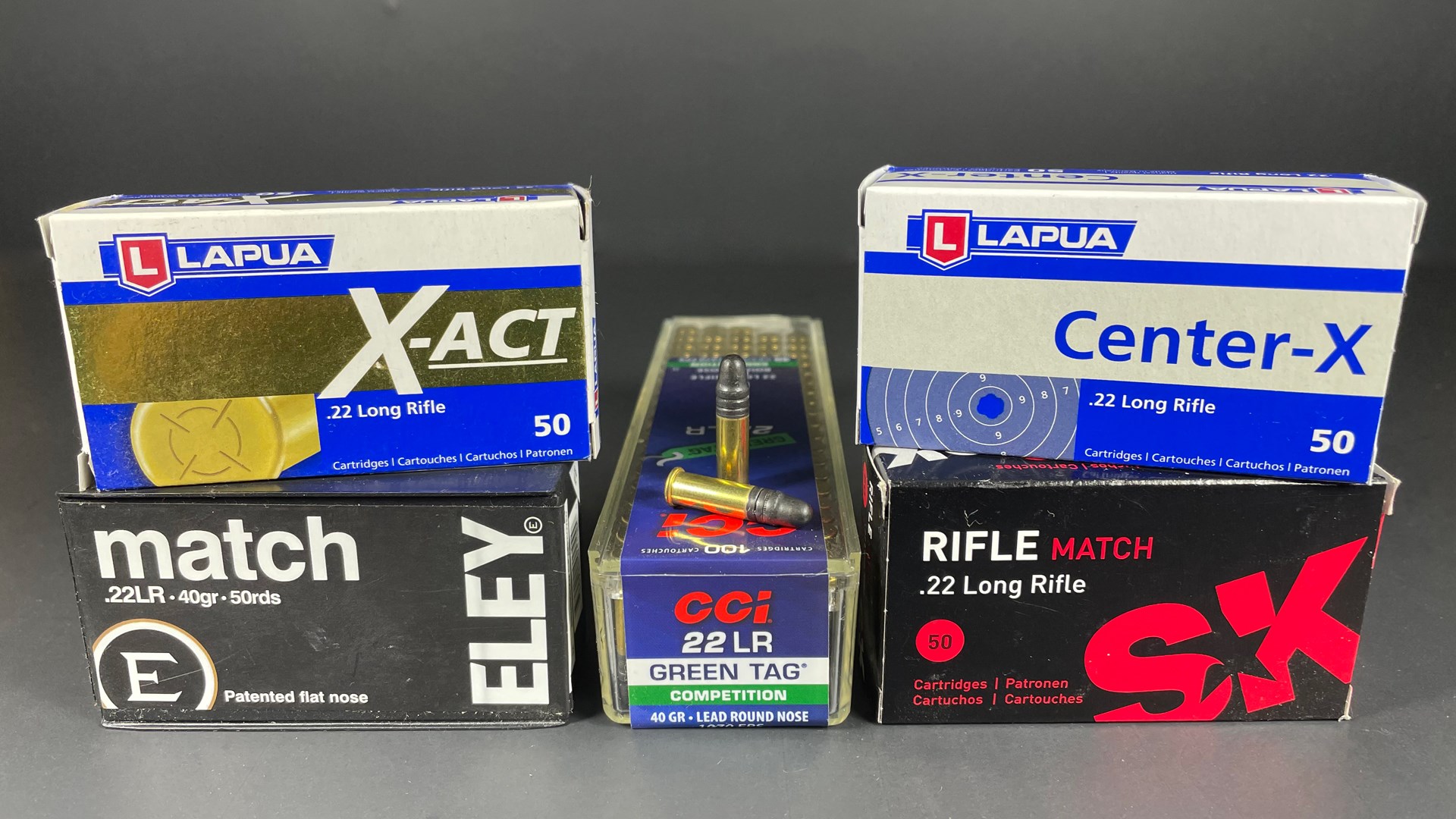
From these examples you see that, with increased cost, comes the potential for increased performance. The question remains, “Is it worth the cost?” Maybe. If you’re equipped with a no-frills, run-of-the mill .22 or hand-me-down relic, then the performance gain will likely be negligible, if any, depending on your marksmanship. In this case, does shaving off a fraction of an inch from your casual plinking group on the back forty even matter, or justify the additional cost? Probably not. But, if you’re using a Vudoo, KIDD, B-14R, RimX or similar platform, or competing, then the difference will be apparent and the elevated price justifiable.
Further, when Capstone Precision Group—who represents Lapua, SK, Berger, and Vihtavuori in the U.S.—Marketing Direct Geoff Esterline and I discussed the distinctions between Super Long Range and Long Range last summer, he remarked, “each gun is different,” and seeing a second-tier load (in this case, Long Range) outperform the top-tier ammunition isn’t uncommon. I’ve personally experienced this phenomenon, as Midas+ will routinely outshine X-Act in my own Savage Arms B22 Precision. So, even having the crème de le crème of rimfire rifles doesn’t mean the best will perform, well, the best. Now, it gets to the difficult part; identifying “the one.”
Chasing “The One”
If you’re a respectable shot—premium ammunition cannot offset poor marksmanship—you can purchase an assortment of high-end, match-type loads and head to the range. But it’s going to get expensive, fast. Plus, should you find an atypically accurate load, will you be able locate more from the same lot? Maybe, maybe not. Ideally, when you pinpoint the ammunition (and lot) that complements your rifle, you want to stock up.
Here is something to consider; although most of us would like to be an Olympian and to use what they do, if the budget doesn’t permit it, don’t be afraid to move down a tier or two—perhaps more. It’s probable that, even when using ammunition several levels from the top, such as Lapua Center-X or Eley Match or Team, it’ll still produce enviable groups—when using proper marksmanship fundamentals, of course. Or switch brands. For instance, though the dispersion rates of SK’s top performer, Rifle Match, fall short of Lapua’s Center-X, I’ve had great success with it. Best of all, it’s also about half the cost of the latter. Again, rifles differ greatly.
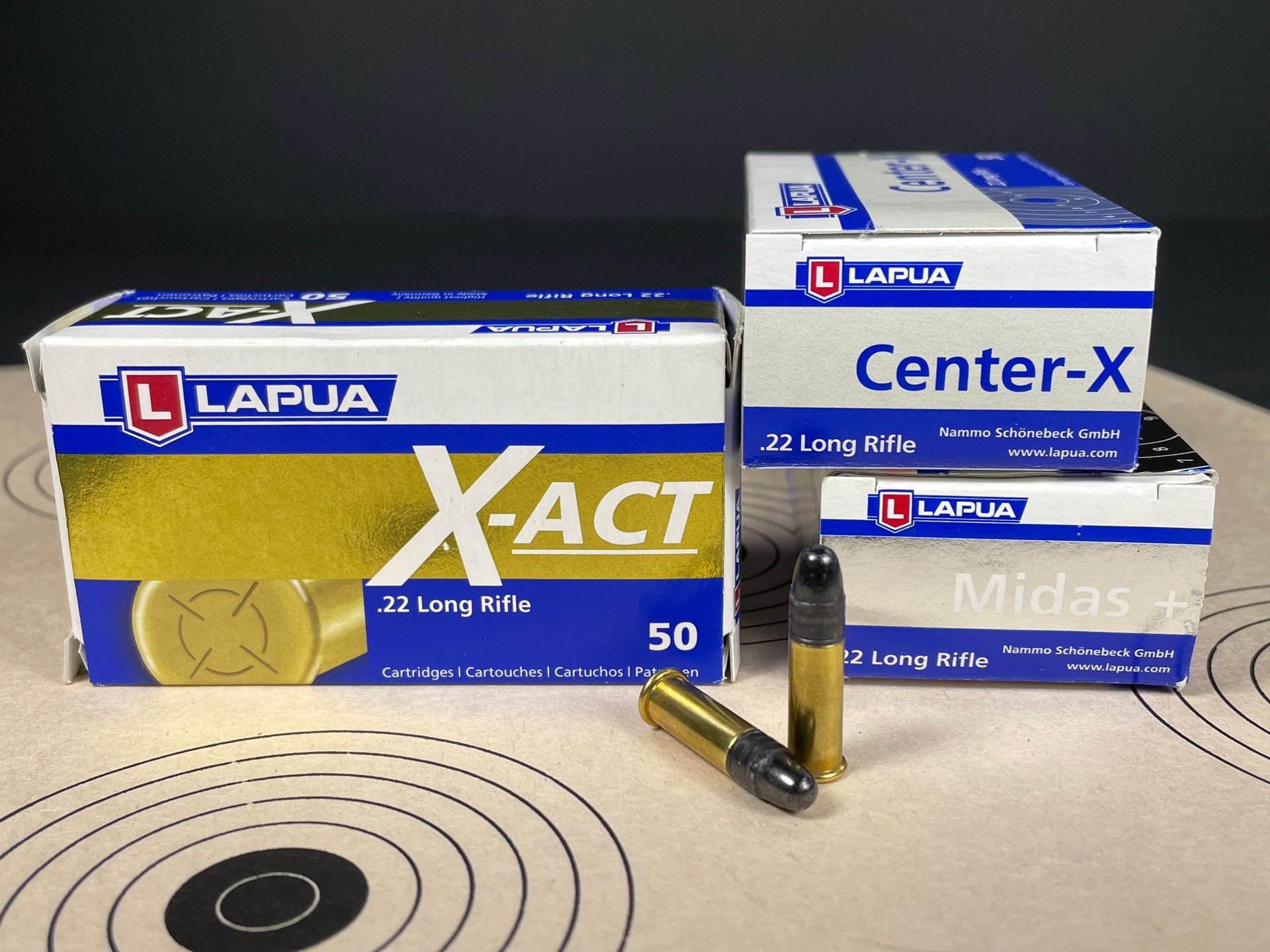
Experimenting with various match loads can be frustrating, too, as .22s can be notoriously fickle. One way to circumvent this hassle, as well as the cost of ceaseless experimenting in non-controlled environment, is to have your rifle paired with the optimal ammunition type and production lot for you by a specialized testing facility.
Lapua offers two such facilities in the U.S.; there is the original Mesa, Ariz., location, and the Marengo, Ohio, facility, which debuted in 2020. The company will typically test six to eight lots of Lapua rimfire, with those demonstrating the most promise being tested again. Once completed, you’ll be provided with the information (and targets) and the option to purchase that exact load in bulk. And, all you have to do is ship—or drop off—your barreled action to them. Simple.
Just as “car” doesn’t aptly describe all automobiles, all competition-worthy, or “match,” ammunition isn’t the same. It varies widely in price and performance, and there is no one-size-fits-all solution. Using what you learned in this article, you’ll easily narrow down the many to just one, saving money and grief in the process.




































